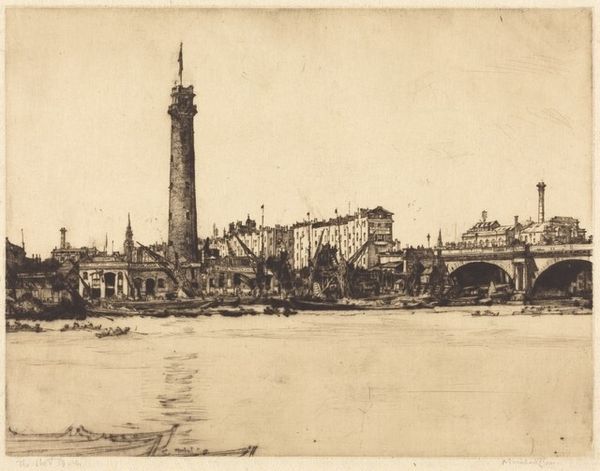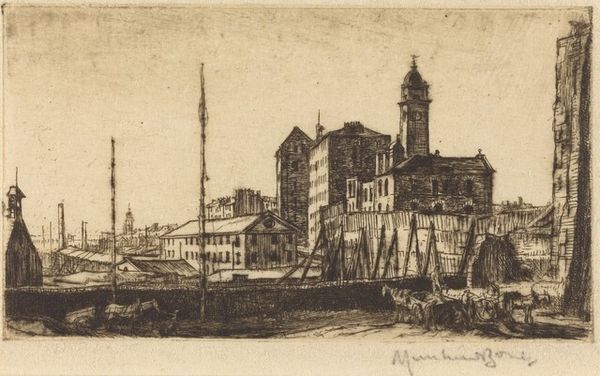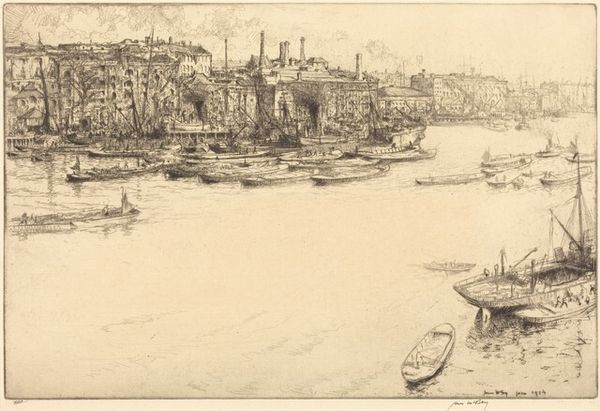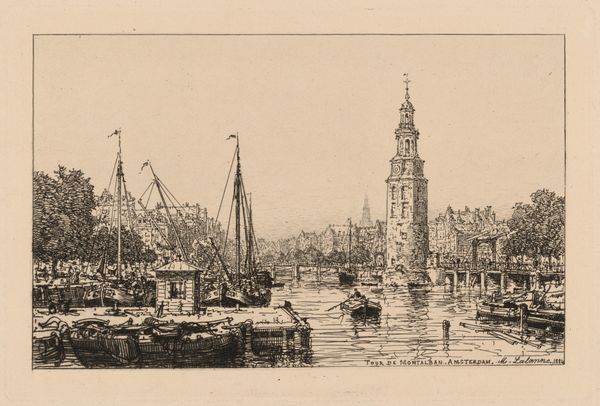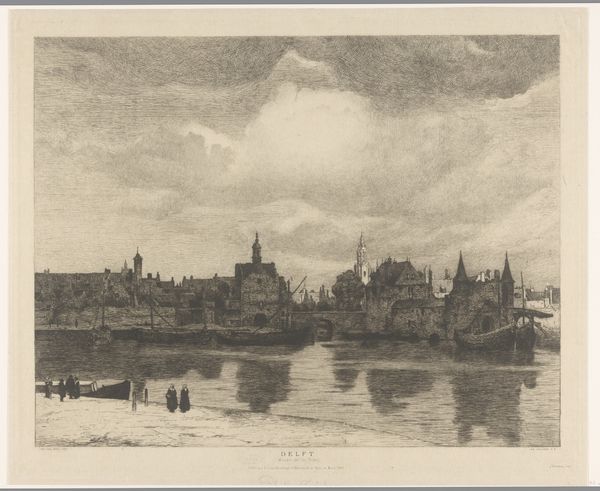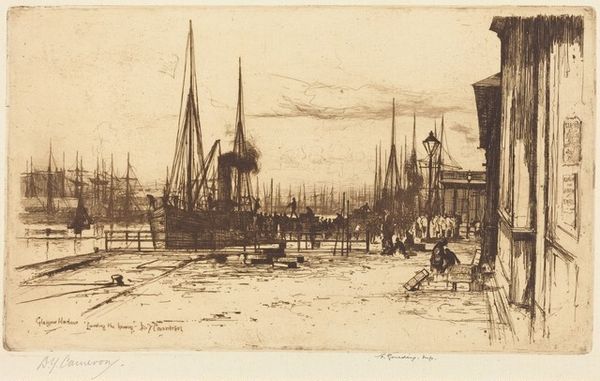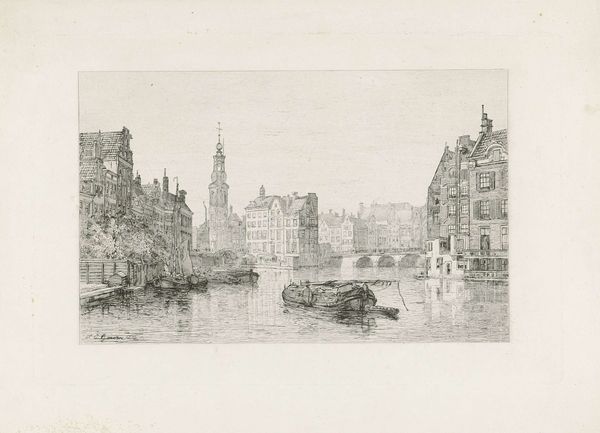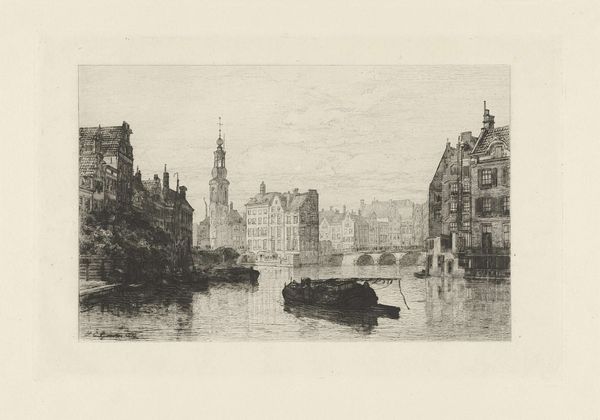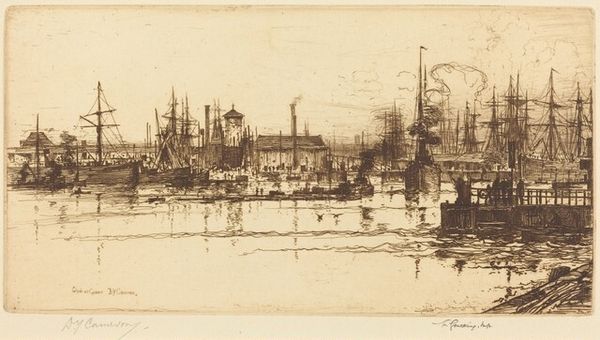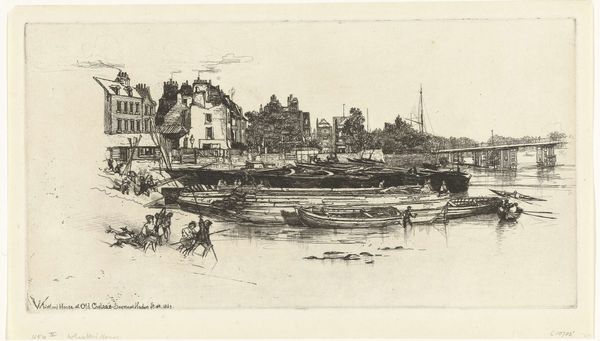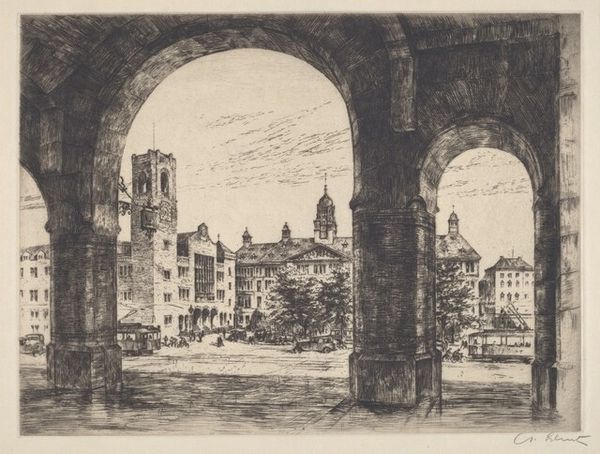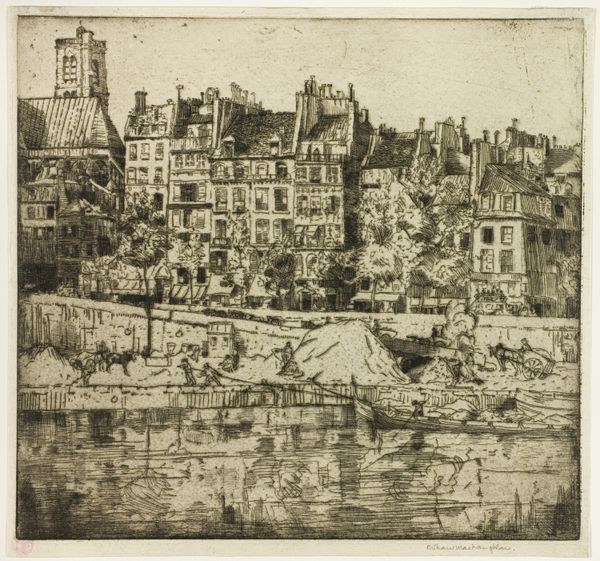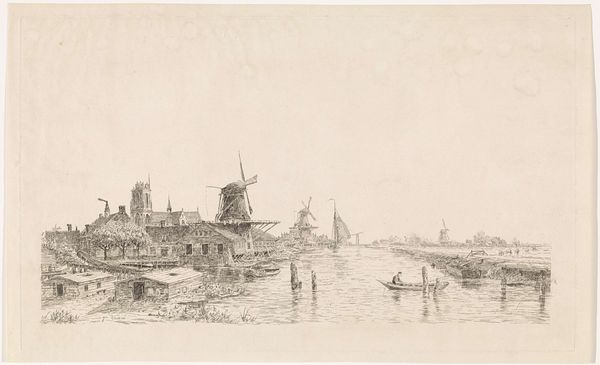
print, etching
# print
#
impressionism
#
etching
#
landscape
#
cityscape
Copyright: National Gallery of Art: CC0 1.0
Editor: Here we have David Young Cameron’s etching, “Greenock, No. 2” from 1890. It feels quite somber, a city rendered in shades of grey, emphasizing the industrial architecture and bustling harbor. What do you see in this piece? Curator: It’s evocative, isn’t it? What I see here is a snapshot of late 19th-century industrialism and its impact on the urban landscape. Greenock was a major port city, and Cameron captures the heart of its economy: trade and shipbuilding. But who benefits, and who bears the brunt of this economic activity? Look at the figure in the foreground, seemingly at rest. How does his presence shift the dynamics of what you're seeing? Editor: He seems detached, almost melancholic, separated from the industry even though he is physically present. Is this Cameron perhaps commenting on the alienation of labor? Curator: Precisely. This era saw burgeoning socialist movements, challenging the social order. Artists started reflecting this unrest. The architecture itself becomes symbolic - are those towering buildings testaments to progress or imposing symbols of power, structures reflecting wealth accumulation at the expense of something else? Editor: It’s interesting to think about how the "progress" of the time wasn’t universally positive. The etching’s muted tones add to this sense of ambivalence. It's like the promise of industry is weighed down by a heavy reality. Curator: Exactly! Cameron’s artistic choices amplify the socio-political undercurrents. Consider also how printmaking, as a medium, democratized art, making it more accessible to the working class and enabling wider circulation of such commentaries. What might its distribution at the time suggest about audience reception, about social dialogues emerging then? Editor: That's a new perspective that I had not considered. I hadn’t thought about the medium's role in social commentary itself. This artwork is more than just a cityscape; it’s a document reflecting a specific moment of economic transformation. Curator: Indeed. And our role as interpreters is to unpack those layered meanings and relate them to contemporary issues.
Comments
No comments
Be the first to comment and join the conversation on the ultimate creative platform.

